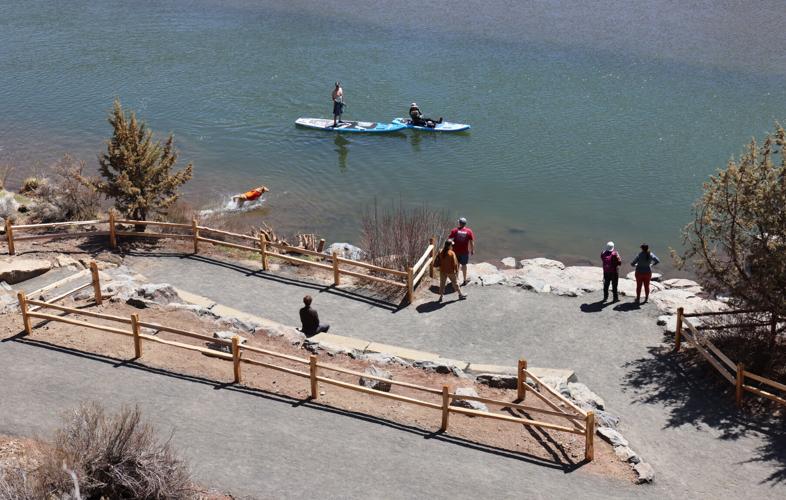This article was published on: 04/26/23 12:30 PM
By Joe Siess
As the weather slowly warms, locals and tourists will notice a few improvements along the Deschutes River in Bend with the completion of the Riverbend South project.
The project was designed to restore a stretch of the riverbank’s habitat and upgrade footpaths and recreational access to the Deschutes River between the Bill Healy Memorial Bridge and the pedestrian footbridge in the Old Mill District. The project is now complete, the Bend Park & Recreation District and the Upper Deschutes Watershed Council said.
“This is five plus years in the making in terms of raising the funding, figuring out the design of what we want to do, and at the end of the day, to provide an example of providing recreational use and protecting the river,” said Kris Knight, executive director of the watershed council. “We are not trying to prevent people from using the river and accessing the river. We just want to do it in a way that is more sustainable.”
Knight said dozens of spots along the river were eroded by heavy use, so three of the most popular locations were improved. Other areas were fenced off and restored.
“All those areas that are now fenced off, they are going to get replanted, and they will have an irrigation system that will be there for five years to let those native, repairing plants come back,” Knight said.
The restoration project will help several native species that live along the river, including a variety of birds, amphibians, otters, beavers and the spotted frog, Knight said.
The project began in 2017 when the park district and the watershed council analyzed all of the riverfront property owned by the district in the urban corridor, said Ian Isaacson, landscape architect and project manager for the park district.
“We quickly realized that user created and designated access points were expanding in number and that erosion was rapidly increasing along many parts of the riverbank from use,” Isaacson said. “Even as Bend continues to grow and gets more busy with river users, we can have recreational access and habitat adjacent to one another and they can both be successful.”
Now that the project is complete, there are three designated entry points for recreational use, two of them near the pedestrian foot bridge that connects Riverbend and Farewell Bend parks, and a third access point built into the concrete log deck — once used to dump logs into the river when Bend was a logging town — next to the Bill Healy bridge, Isaacson said.
The entry points are now finished with grouted boulder terracing and stone steps to give people access to the river without damaging the riverbank, Isaacson said.
“We are excited for more folks to see it, and once the weather warms up more and more people are going to realize what is going on down here and I think they are going to like it, too,” Isaacson said.
Serena Bishop Gordon, the sustainability director for Visit Bend, said her organization provided funding for the project using the Bend Sustainability Fund, which reinvests tax dollars generated from short term hotel and rental stays. Bishop Gordon said the project is a good example of how to leverage the positive impacts of tourism dollars to benefit the local community.
“One of the things that we look to do is to enhance the experience of everyone who spends time in our community and in this case along the river,” Bishop Gordon said.
Bishop Gordon said the Deschutes River is a part of Bend’s underlying infrastructure and occupies a major role in local history and culture. She said it is important to remember the river was once the town’s lifeblood in the timber days, and that not long ago, people were unable to use it for swimming or recreation.
“It (the Deschutes River) should be a reminder to all of us that we are here as visitors to this place, all of us, and if we don’t take care of our precious resources, they will cease to exist,” Bishop Gordon said.
“This summer, when people are getting in the river…it is very important that they recognize there is so much time, energy, passion, and money that goes into creating this experience that most people look at as free. Nothing is free. It takes so many people and commitments to provide an experience that is sort of taken for granted.”




